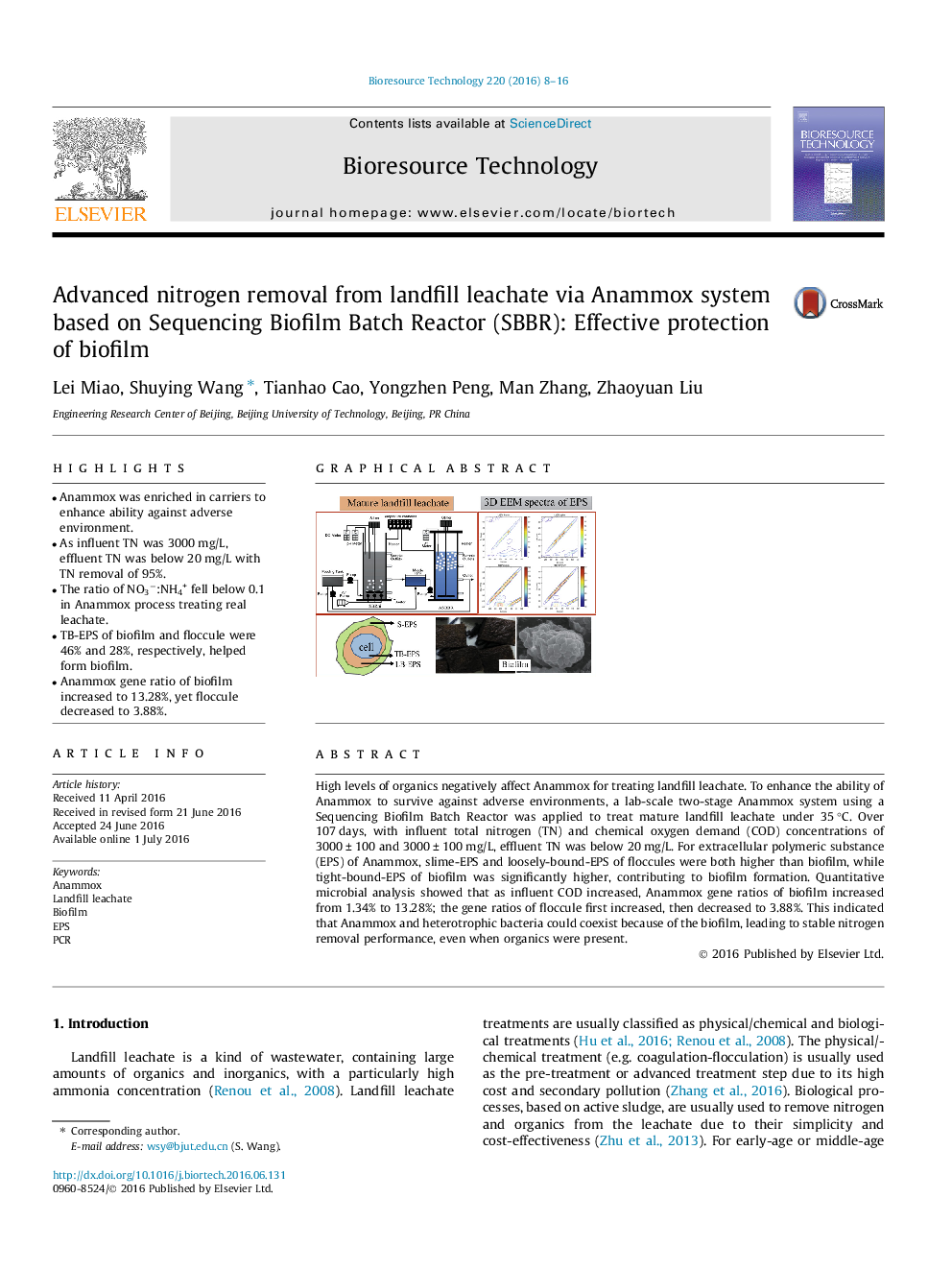| کد مقاله | کد نشریه | سال انتشار | مقاله انگلیسی | نسخه تمام متن |
|---|---|---|---|---|
| 679001 | 1459923 | 2016 | 9 صفحه PDF | دانلود رایگان |
• Anammox was enriched in carriers to enhance ability against adverse environment.
• As influent TN was 3000 mg/L, effluent TN was below 20 mg/L with TN removal of 95%.
• The ratio of NO3−:NH4+ fell below 0.1 in Anammox process treating real leachate.
• TB-EPS of biofilm and floccule were 46% and 28%, respectively, helped form biofilm.
• Anammox gene ratio of biofilm increased to 13.28%, yet floccule decreased to 3.88%.
High levels of organics negatively affect Anammox for treating landfill leachate. To enhance the ability of Anammox to survive against adverse environments, a lab-scale two-stage Anammox system using a Sequencing Biofilm Batch Reactor was applied to treat mature landfill leachate under 35 °C. Over 107 days, with influent total nitrogen (TN) and chemical oxygen demand (COD) concentrations of 3000 ± 100 and 3000 ± 100 mg/L, effluent TN was below 20 mg/L. For extracellular polymeric substance (EPS) of Anammox, slime-EPS and loosely-bound-EPS of floccules were both higher than biofilm, while tight-bound-EPS of biofilm was significantly higher, contributing to biofilm formation. Quantitative microbial analysis showed that as influent COD increased, Anammox gene ratios of biofilm increased from 1.34% to 13.28%; the gene ratios of floccule first increased, then decreased to 3.88%. This indicated that Anammox and heterotrophic bacteria could coexist because of the biofilm, leading to stable nitrogen removal performance, even when organics were present.
Figure optionsDownload as PowerPoint slide
Journal: Bioresource Technology - Volume 220, November 2016, Pages 8–16
